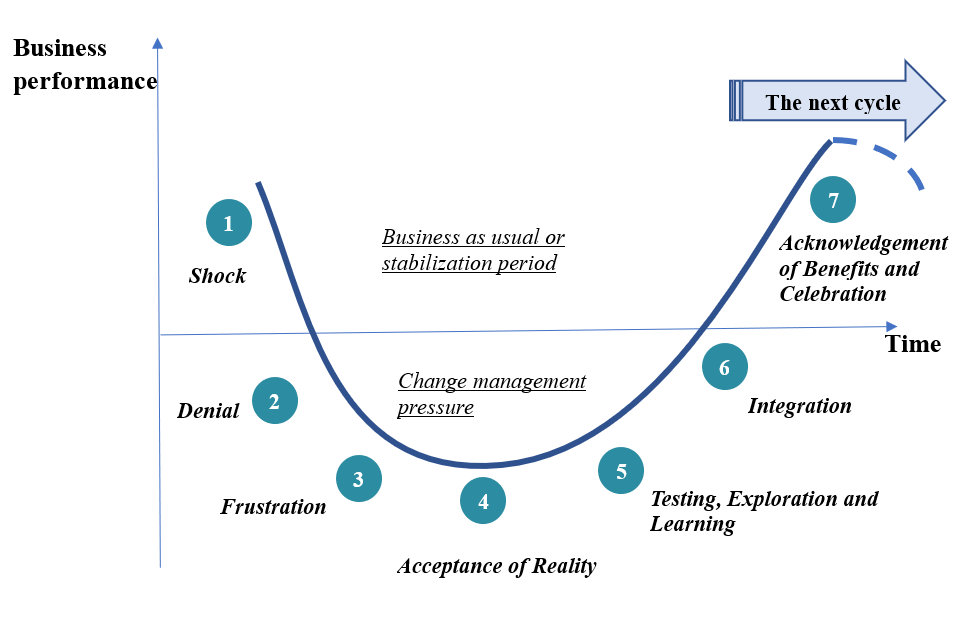SILENCE! Transformation in Progress
In recent years the topic of transformation has become increasingly important and sparked interest in both academic and empirical fields. Business and social environments are changing quickly and encouraging companies and societies to find new ways to adapt and change frequently. Transformation programmes have become common in all industries and markets -- continuous transformation is a new normal ecosystem.
In this article, we introduce the concept of the transformation life-cycle. Leaders should understand that transformation is a long-term journey, not a short-term destination. That is why transformations should be planned carefully. In many instances, understanding the transformation life-cycle is key to achieving satisfying results. Leaders pursuing transformations should regularly explore the differences between their current achievements and their future aspirations for the organisation. As well, leaders should remain open to emerging opportunities. Figure 1 represents the key milestones of the transformation life-cycle.
Figure 1 The transformation life-cycle
Source: Adapted from Elisabeth Kubler-Ross Change Curve (Kübler-Ross and Kessler, 2005)
Thus, the transformation cycle includes seven phases: 1) Shock 2) Denial 3) Frustration 4) Acceptance of Reality 5) Testing, Exploration and Learning 6) Integration and 7) Acknowledgement of Benefits and Celebration. All are closely connected, and each contributes its own important value to transformation success. As Hall and Fukami (1979) point out, “rather than reducing uncertainty, or attempting to control it (which may be impossible anyway), it is posited here that organizations should instead attempt to learn from variance of individual behaviour and use that uncertainty as feedback or signal” (p. 138-39).
Steering through the cycle, leaders must analyse the perceived benefits at each phase and/or reflect on drawbacks -- and then take necessary steps to change course. Indeed, understanding the transformation life-cycle equips leaders with a broader repertoire of responses to transformation uncertainties, ambiguities and complexities. Moreover, exploring dependencies between the current cycle phase and the following one helps identify and address multiple issues properly. Such an approach closely connects the transformation phase to 1) a profound understanding of the need for change 2) the active participation of employees in transformation programmes and 3) true openness to alternative solutions.
Transformations should not hurt business performance. To ensure this does not occur, it is useful to apply the – Theory of “good money” and “bad money” (Gresham's law), meaning that leaders remain impatient for quality but patient when approaching a new cycle. Applying this theory helps minimize transformation risks, removing bias from feasibility studies and encouraging leaders to regularly test their initial assumptions. As soon as leaders acknowledge benefits and celebrate achievements, transformation can continue with the next cycle. Importantly, transformations should take holidays when leaders seek to stabilize quality, to repair and renew resources, to secure a new normal and to recharge energy for the next phase.
Understanding the transformation life-cycle changes the way leaders 1) engage all key stakeholders 2) identify heuristics for making better decisions and 3) shape long-term possibilities. Further, this understanding contributes to the proper decision-making process, which recognizes patterns, psychology and the need for social technology. Thomas Edison created the electric lightbulb and with revolutionary efforts wrapped an entire industry around it. Likewise, transformation is hard work -- it is an approach that blends art and science.
References
Hall, D. T., and Fukami, C. V. (1979). Organizational design and adult learning. In B. M. Staw (Ed.), Research in organizational behaviour (Vol. 1, pp.125-167). Greenwich, CT: JAI Press.
Kübler-Ross E., Kessler D. On Grief and Grieving: Finding the Meaning of Grief Through the Five Stages of Loss (Scribner, 2005)






